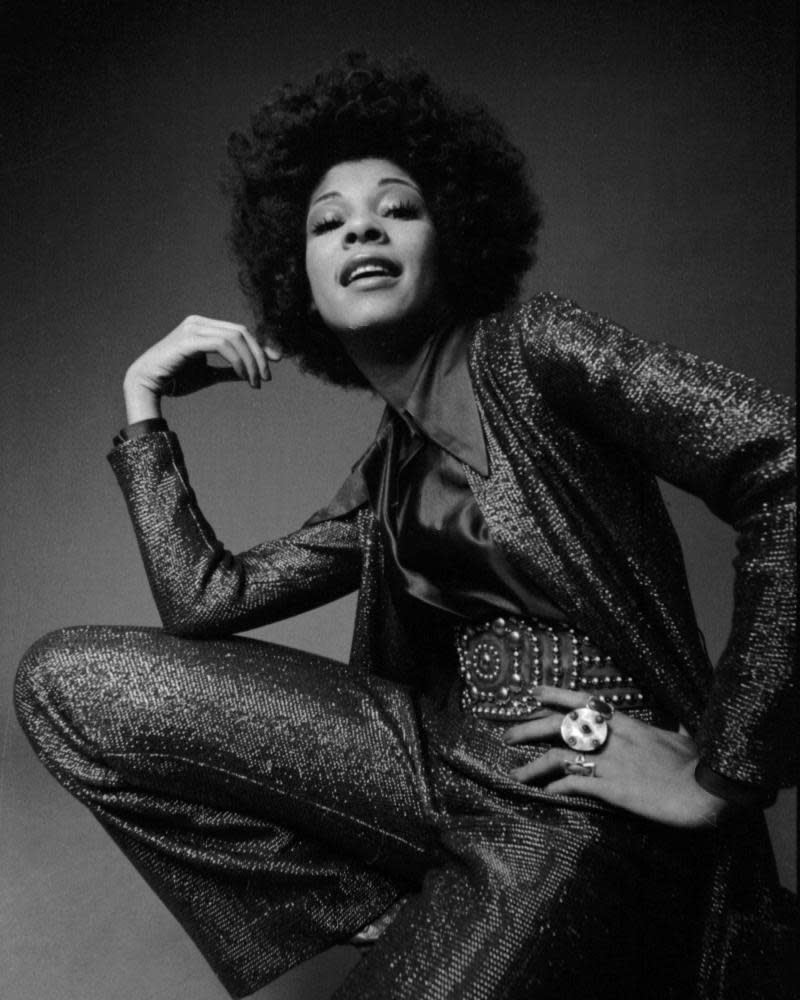Betty Davis obituary

When the singer Betty Davis marched on to the stage at Ronnie Scott’s jazz club in London in 1975, she was in her underwear – the sort that might have come from an S&M boutique elsewhere in Soho. At that time and in that place, she was enough to scare the living daylights out of her audience. And that was before the tall, slender woman with the giant afro started contorting her body as she delivered songs whose lyrics headed straight through the parental-guidance zone and out the other side, backed by stripped-down funk from her adept band.
She was certainly ahead of her time. Later in the decade, the ripped fishnets of London’s punkettes and the gender-fluid styling of Prince would bring such gestures into the mainstream of pop. The uncompromising stance would take more time to filter through, resonating at deeper levels in the work of black female artists such as Erykah Badu, Macy Gray, Missy Elliott and Janelle Monáe, to whom she represented a pioneer and exemplar.
Davis, who has died aged 77, exerted an impact on popular culture out of all proportion to her short-lived celebrity, which rested chiefly on her brief marriage in 1968 to the trumpeter Miles Davis. Her cutting-edge tastes and freewheeling way of life changed the way Miles – already a star in the jazz world – thought, looked and sounded. That achievement would have been enough for most people, but half a century later her own music emerged from obscurity to intrigue new audiences.
She was born in Durham, North Carolina, where her grandmother introduced her to the sound of the blues before the family moved to Homestead, a town outside Pittsburgh, where her father, Henry Mabry, found work in a steel mill. Betty (named after her mother) left home and high school for New York in 1960, aged 16, after winning a place at the Fashion Institute of Technology in Manhattan. “She knew she was going to be something, and we all knew it,” her brother Chuck told an interviewer. “We just didn’t know what.”

Gravitating to Greenwich Village, she became immersed in a culture where styles and races mixed. Her looks brought her work as a model for fashion shoots in Ebony, Seventeen and Glamour magazines and for designers including Halston and Norma Kamali, but music was equally important to her. She DJed at a Village club and made a couple of singles without success before writing a song, Uptown (to Harlem), which appeared on a hit album by the Chambers Brothers in 1967.
When she met Davis, introduced by Devon Wilson, Jimi Hendrix’s girlfriend, Mabry had just ended a relationship with the South African trumpeter Hugh Masekela. Davis had recently divorced his first wife, the dancer Frances Taylor. At the time he was trying to find a way out of the confines of a world where his adoring audiences expected him to wear narrow-cut Italian suits in fine fabrics while exploring the pensive cadences of My Funny Valentine in the way that had brought him fame and wealth.
Under his new wife’s influence, Davis listened to Hendrix and Sly Stone. “Whatever I got into, he got into,” she said. He put her picture on the cover of an album, Filles de Kilimanjaro, which included a long track titled Mademoiselle Mabry, based on a lick from a Hendrix song, The Wind Cries Mary. His former wardrobe was replaced by buckskin-fringed jackets, silk scarves and freaky sunglasses. Over a band blending rock textures with bottom-heavy funk beats, he played trumpet through a wah-wah pedal.
The marriage lasted barely a year, during which he tried and failed to get her a recording contract. It ended, in Betty’s account, when he turned violent after becoming convinced (wrongly, she maintained) that she was having an affair with Hendrix.
In 1971 Betty Davis – as she would continue to be known – spent several months in London, where she was befriended by Marc Bolan and continued to write songs. Returning to the US, she made three albums – Betty Davis, They Say I’m Different and Nasty Gal – between 1973 and 1975, raising many eyebrows but little consumer interest, not least because much of the content was too sexually explicit for radio play. “I used to beat him with a turquoise chain,” she sang, provoking speculation over which of her partners she was depicting.
Depressed by the death of her father towards the end of the 1970s, she returned to Homestead, where she lived quietly for the next four decades. In recent years, with her approval, her music has been reissued by the Seattle label Light in the Attic. A documentary, They Say I’m Different, was released in 2017, reawakening interest in the work of a woman so determinedly in control of her sound, her sexuality and her life choices.
• Betty Davis, singer, songwriter and model, born 26 July 1945; died 9 February 2022

 Yahoo News
Yahoo News 